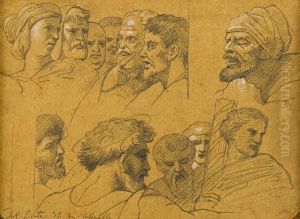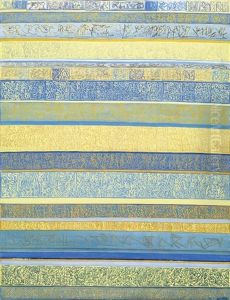Antonio Licata Paintings
Antonio Licata was an Italian painter and sculptor, known for his contribution to the modern art movement in Italy during the 20th century. Born on February 28, 1913, in Palermo, Sicily, Licata developed an interest in art at a young age. His early exposure to the rich cultural heritage of Sicily would later influence his artistic style, which was characterized by vibrant colors, dynamic forms, and a blend of abstraction and figuration.
Licata moved to Rome in the 1930s to pursue his artistic education. There, he became involved in the city's burgeoning art scene and was influenced by the contemporary trends of his time, including surrealism, abstract expressionism, and the informal art movement that was gaining popularity in post-war Europe. He studied at the Accademia di Belle Arti di Roma, where he honed his skills in painting and sculpture.
Throughout his career, Licata exhibited his work widely in Italy and abroad. He participated in several important exhibitions, such as the Venice Biennale and the Rome Quadriennale, which helped establish his reputation as a significant figure in the Italian art world. His work was celebrated for its expressive quality and its ability to capture the human condition through a unique visual language.
In addition to painting and sculpture, Licata also worked in other mediums, including drawing and graphic arts. He was a versatile artist whose creativity extended to set and costume design for theater and opera, reflecting his deep connection to the broader world of Italian culture and the arts.
Antonio Licata remained active as an artist throughout his life, continually evolving his style and experimenting with new techniques and materials. His contributions to modern Italian art have been recognized through various awards and retrospectives. He passed away on January 16, 1987, leaving behind a legacy that continues to inspire and influence contemporary artists.

